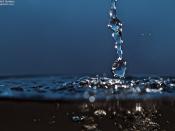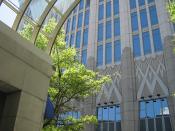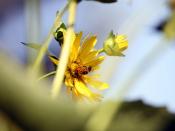The science learning program utilised a scientific enquiry process focusing on Melanie, a 12 year old female. This activity was chosen and deemed appropriate as Melanie previously expressed an interest in my bee hives. It was hoped Melanie would learn more about scientific methods and processes. The teaching strategy focused on using an inquiry-based learning approach, asking open-ended questions to generate curiosity.
The learning sequence was targeted at Stages 8 and 9 of The Tasmanian Science Curriculum (2007). This lesson was instigated utilising the 5E's science Learning Sequence Planner (Australian Government, 2008) and was initiated with a walk around my home garden observing the flowers. When a honey bee (Apis mellifera) was sighted visiting a flower the question was asked "What is she doing?" initiating a conversation about the life of bees, their community, their work as pollinators and honey collection. The subjects of flower colour, honey types and the work bees do pollinating flowers were discussed.
This engaged the student whereupon we moved inside the house and perused several books on bees.
Melanie was asked to explore the topic beginning with a KWHL chart (appendix A) stating what she knew about bees, what she would like to know about bees and how she could explore these questions. She brainstormed this with her sister Charlie-Rose (aged 7). Melanie was then asked to write down what she thought a science experiment involved (appendix B). This revealed that Melanie regarded scientific experiments to consist of following set instructions to produce a predetermined outcome.
Melanie was then asked to phrase a scientific question for the inquiry, design an experiment to research her question and make a prediction of what her results might be. Melanie stated that her question was "What colour flower are bees most attracted to" and predicted that...


